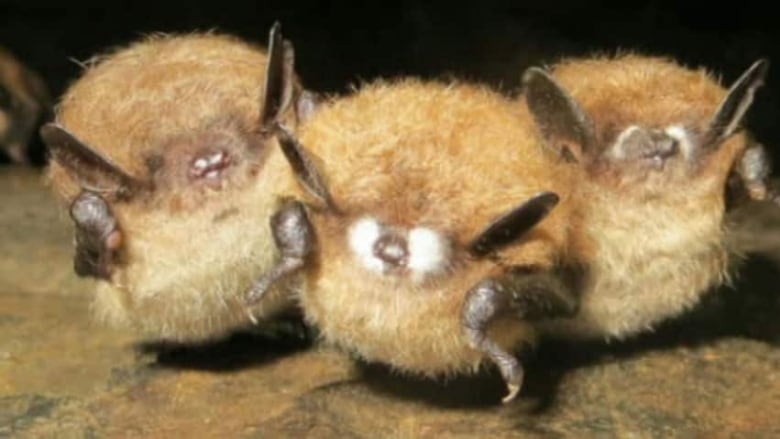Cape Breton bat population appears to be holding steady
Last winter, natural resources department confirmed a few cases of white-nose syndrome on the Island

While bats in mainland NovaScotiaare facing extinction, populations in Cape Breton seem to be holding their own.
The Atlantic Coastal Action Program (ACAP)Cape Breton is monitoring hibernation sites again this winter. So far,there havebeen no signs of white-nose syndrome,a fungal infection that grows on bats' wings and muzzles and causes them to leave hibernation.
JaredTomieis the environmental project manager withACAPCB. He saysequipment placed outside hibernation sites lets them know if anybats are active.
"We haven't had any sign of abnormal activity yet, so that's encouraging," he said.
"You would start to see them now, especially that we're into February.I think at some of the other sites on the mainland, they start to see some of thesemortalitiesin January and around this time of year.This is really in the middle of our winter, so if they're to be doing anything abnormal or moving around, this would be the time to see them."
Tomiesays the organization has two monitors out right now and is looking for another two locations as well.
Tomiecautions that because winter is not over and they're only monitoring two sites, it's too early to say whether Cape Breton bats are safe.
Last winter, the Department of Natural Resources did confirm a few cases of white-nose syndrome on the Island.
Mainland Nova Scotia
HughBrodersis a biologist at St. Mary's University who specializes in bat studies. He says the news on mainland NovaScotiais not good.
"Our best case scenario of the five sites that we monitored was a 97 per cent decline. And the worst case scenario was a 100 per centdecline relative to the pre white-nose syndrome numbers," he said.
Brodersishoping the bats that have survived may have a resistance to the fungus. Even so, he says, it would take decadesfor the populationto recover.












_(720p).jpg)


 OFFICIAL HD MUSIC VIDEO.jpg)
.jpg)



























































































